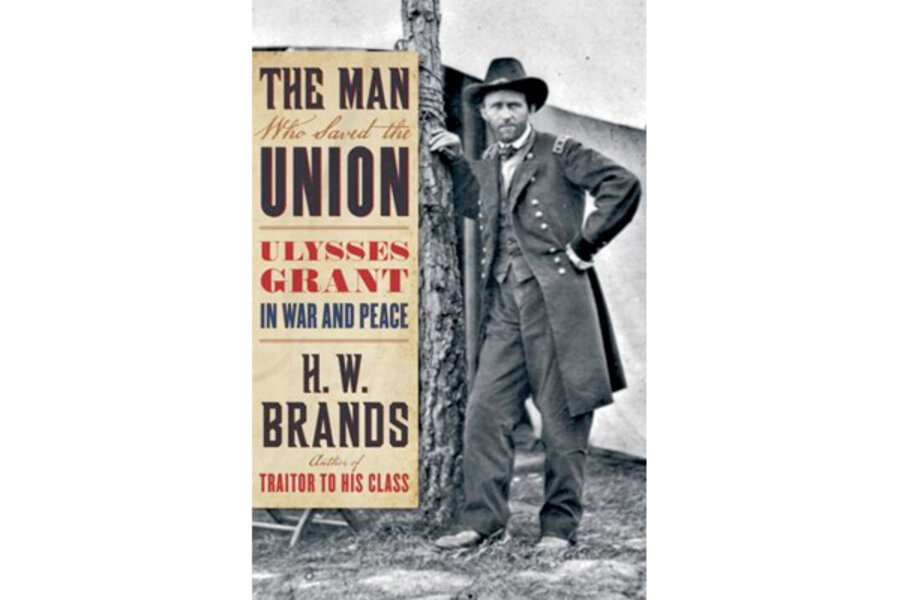The Man Who Saved the Union
Loading...
Groucho Marx loved to ask a trick question: Who's buried in Grant's Tomb? If you're ever in the Big Apple, you can drop by Riverside Park to see the answer for yourself. Just don't expect to have much company.
The lonely mausoleum on the Upper West Side is quiet in more ways than one. Other than the words "Let Us Have Peace" above its entrance, there are no engravings of famous quotes from Ulysses S. Grant and few hints as to why he became the most beloved American of his time.
If Grant sticks in our memories at all, it's for helping to win the Civil War, for drinking too much, and for being one of a long line of obscure 19th-century presidents.
Every few years, a new biography comes along and tries to convince readers that Grant's worth remembering. The latest one – The Man Who Saved the Union: Ulysses Grant in War and Peace – is a treat for history buffs and anyone else who enjoys a life story well-told.
Through a quick-paced 736 pages, we meet a man who didn't flinch at paying the cost of war or the cost of peace, whose journey from mid-life disgrace is a testament to the power of risk-taking and dogged persistence.
But this isn't a modern-style biography that psychoanalyzes its subject and tries to imagine what he or she was thinking. Well-respected historian H.W. Brand is straightforward and avoids speculation.
Fortunately for Brand and his readers, Grant and those surrounding him – including his wife, Julia, and General William Tecumseh Sherman – were deeply perceptive observers. Grant's own memoirs are still read today and widely considered the most revealing and honest that any president ever produced, an irony considering that during his life he had a "reputation as the American sphinx, the man of deeds rather than words."
Richly detailed and deeply moving, "The Man Who Saved the Union" has a you-are-there quality thanks to its carefully drawn sketches of people and places. We see Grant at war in Mexico as a young man, as a son with major father and father-in-law issues, and as a rising military star who captured the eye of a president desperate for a general who wasn't afraid to fight. Abraham Lincoln gave him rave reviews: "... He makes things git! Wherever he is, things move!"
Grant's critics smeared him as a butcher (I hoped to read more about how he dealt with sending so many soldiers to their deaths) and a drunk. In a risky and remarkable feat of sensitive personal diplomacy, an Army colleague warned him in a letter about his alleged drinking: "I may be ... doing you an injustice by unfounded suspicion, but if in error, it had better be on the side of the country's safety than in fear of offending a friend." Grant's reply is lost to time.
But naysayers over the decades could never come up with a time when "alcohol impaired his performance of duty." And they couldn't erase the inconvenient fact that no one, as Brand puts it, had done more to preserve the union and make it secure.
Grant definitely had his failings. As president for two terms after the Civil War, he was blind to financial chicanery among his allies. His inability to protect the integrity of the White House blotted his reputation, and he was often ranked as one of the worst presidents ever. Only recently have biographies begun to bolster his reputation as a president who kept the post-war peace and protected the vulnerable.
As Brand shows, Grant was fair to Native Americans and showed plenty of backbone when it came to the South's bloody efforts to restore the pre-war balance of whites on top and blacks on the bottom. Not until far into the 20th century would another president care as much about civil rights, Brand writes.
That's a debatable claim, but there's no arguing that Grant, a man who once cared little about the plight of blacks, was a powerful friend to those who needed one the most.
If you ever feel despair about the United States and wonder how anything ever gets accomplished in this country, head to Grant's Tomb. The answer lies within.
For more about Grant's memoirs, check the 2011 Monitor interview with a historian who explains why they are so unique and powerful.
Randy Dotinga is a freelance writer in San Diego.








